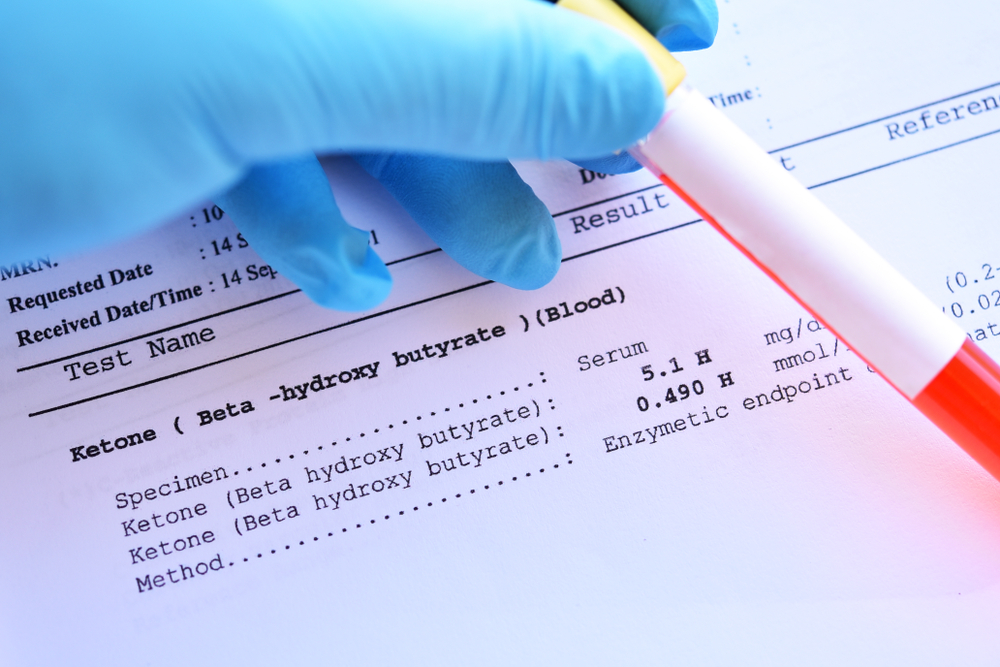
Overview
Diabetic ketoacidosis (DKA) is a serious, potentially life-threatening diabetes complication that occurs when insulin deficiency impedes glucose from entering the cell to produce metabolic fuel. In ketoacidosis, the liver breaks down fat as ketones in quick succession to use as fuel source for the body. Ketones in turn accumulate in the urine and blood, turning it acidic.
DKA mainly affects people living with type 1 diabetes. However, it is not uncommon in some patients with type 2 diabetes.
Key facts
- Diabetes ketoacidosis is a life-threatening medical condition
- It occurs when the liver starts breaking down fat (ketones) too rapidly for the body to process
- Usually ketones are produced by the liver when you haven’t had a meal in a while, they are used as fuel for the muscles and heart
- In ketoacidosis, the liver churns out more ketones than the body can process
- These ketones turn the blood acidic and it becomes life-threatening
- Ketoacidosis is one of the ways to spot type 1 diabetes in people who have not been previously diagnosed
- Missing insulin doses, serious illness and infections can trigger ketoacidosis in people living with type 1 diabetes.
Symptoms
- Dehydration
- Need to urinate frequently or incessant thirst that refuses to abate
- Decreased alertness
- Headache
- Deep, rapid breathing
- Dry mouth and skin
- Fruity-smelling breath
- Joint aches or muscle stiffness
- Nausea and vomiting
- Stomach pain
Diagnosis
There are a few ways to test for ketoacidosis. One might be a ketone testing where the patient’s blood or urine sample is screened. In cases where ketoacidosis is suspected, the urine will be screened first. If it tests positive for ketones, the blood will then be screened to measure a ketone called beta-hydroxybutyrate. It’s the most common ketone. Another main ketone usually checked for is called acetoacetate.
Other diagnostic tests for ketoacidosis include;
Full blood work including
- Blood pressure measurement
- Osmolality blood test
- Arterial blood gas
- Blood glucose test
Causes
Diabetic ketoacidosis occurs when your body does not have or produce enough insulin to function. To fill in, your liver rapidly breaks down fat to provide energy for the heart and muscle. However, your body cannot process the fat or ketones (which can be toxic) being churned out which leads to your blood turning acidic.
Prevention
When ketoacidosis occurs, your doctor might change your insulin dose or change the type you use to prevent a repeat.
Managing your blood sugar by keeping your weight at healthy levels and exercising and taking your medications are good ways to prevent a DKA, which is life-threatening from happening.
Other ways include:
- Drink lots of water
- Stay faithful to your meal plans
- Exercise
- Take your medications regularly
- Check for any irregularities in your insulin including clumps
- Check for expired insulin
- Watch your blood sugar level
- Create an emergency plan for ketoacidosis
Typical treatments
Treatment for diabetic ketoacidosis usually involves;
- Fluid replacement- During ketoacidosis, you might become dehydrated due to excess urination. To remedy that, you will receive fluid either orally or intravenously until you’re rehydrated. This will also help to dilute and cleanse the toxic excess sugar in your blood.
- Electrolyte replacement- Electrolytes will be administered through a vein to replace key minerals like potassium, sodium and chloride to keep your muscles, heart and nerves functioning properly.
- Insulin therapy- Insulin will be administered intravenously to reverse the process that causes ketoacidosis. You will be monitored till your blood sugar levels drop to about 200 mg/dL (11.1 mmol/L) signalling that your blood is no longer acidic.
Additionally, antibiotics can be administered if your doctor suspects an infection. You may be required to take a heart evaluation if your healthcare giver suspects you might be at risk of a heart failure.
Conclusion
Diabetic ketoacidosis is a serious and potentially fatal metabolic disorder caused by severe insulin insufficiency. It usually affects people living with type 1 diabetes but it is not uncommon in some patients with type 2 diabetes.
Keeping your weight at healthy levels, taking insulin and medications, eating healthy and practising general self care can prevent ketoacidosis from occurring.
MOST COMMON
